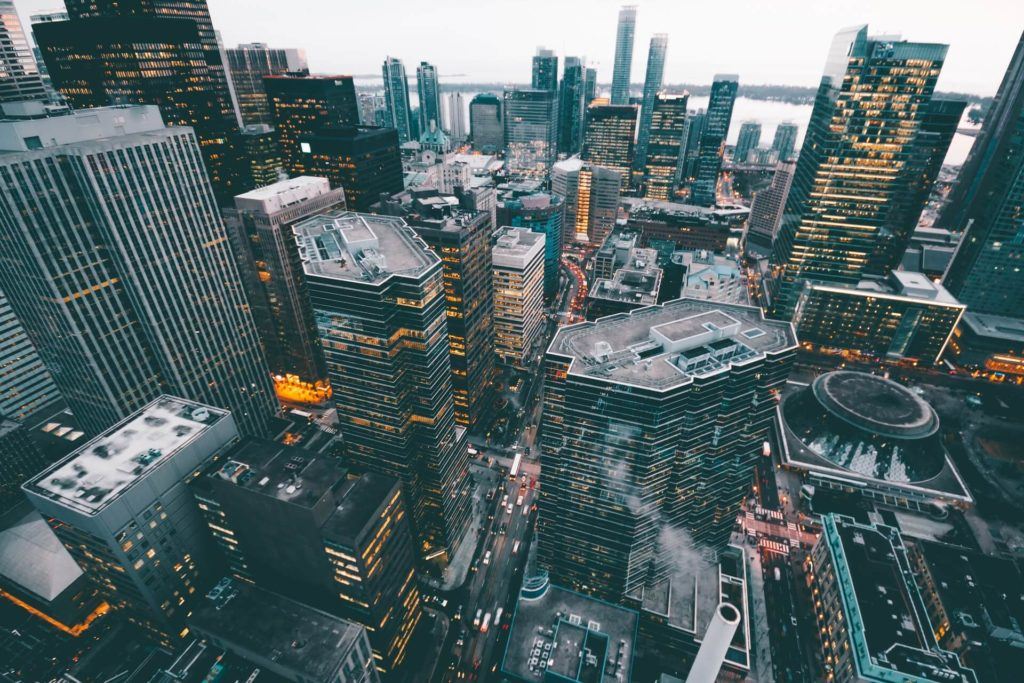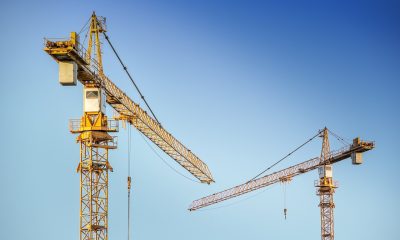Business
City tax bases, new contractor marketplace benefit from downtown revitalization
Cities throughout the United States are announcing revitalization projects.

The revitalization trend is strong – so strong, in fact, that it’s hard to find a state without a number of cities either in the planning or launching stages of rebuilding their urban cores. These types of initiatives have common components, and they all have a need for private sector contractors, investors and/or partners.
Downtown revitalization projects include some mix of entertainment venues, retail establishments, multimodal transportation, affordable housing and outdoor areas that are conducive to walking and shopping. Safe downtowns with thriving businesses and residential developments create places where people want to live, work, shop, eat and gather for recreation and entertainment. Vibrant downtown areas greatly enhance city tax revenues.
City leaders often start the process by seeking out non-revenue producing property that can become a part of a revitalization effort. According to the International Downtown Association, a majority of vibrant downtowns contain about 3 percent of citywide land and produce 14 percent of retail, food and beverage businesses and 35 percent of all hotel rooms. Those percentages can generate as much as $53 million in sales tax per square mile. Since that amount is nearly 10 times the citywide average, it’s understandable why there are so many revitalization projects being planned.
City officials often seek partnerships with developers willing to help create new and innovative downtown destinations. New infrastructure projects, such as landscaped medians, parking garages, pedestrian walkways, traffic improvements, decorative lighting, and enhanced public Wi-Fi, are all coveted parts of successful redeveloped downtowns. A signature park, venue or convention center is also a great way to anchor revitalization efforts.
Increased investment in downtown projects is not limited to cities. In New York, the Regional Economic Development Council is making more than $525 million in state resources available for community revitalization and business growth. One of the council’s top priorities for 2019 includes downtown revitalization.
A variety of alternative funding options are available for urban redevelopment initiatives. In addition to private sector interest in these types of projects, funding is also available from economic development organizations, state programs, U.S. Transportation Department BUILD grants, U.S. Department of Housing and Urban Development Community Development Block Grants and Main Street America grants. Other options include downtown public improvement districts (PIDs), bonds, low-interest loans and master developer/P3 partnerships.
One lesson to be drawn from the recent failed partnership between Amazon and New York City is that cities must be proactive in communicating with citizens and taxpayers about partnerships that involve tax incentives. Every list of ‘best practices’ includes a community outreach plan to educate citizens about the anticipated benefits of such projects. Cities as diverse as Midland, Texas, Louisville, Kentucky, and Chicago have found that every dollar Invested in urban development can be expected to return six dollars to the city’s tax base.

Downtown revitalization projects include entertainment venues, retail establishments, transportation, affordable housing, and outdoor areas. (Source)
Here are just a few of the many upcoming opportunities related to urban revitalization throughout the country:
The city of Wichita, Kansas, plans to issue a request for proposals (RFP) for site selection and concept development for a new performing arts center. The city owns property near Main Street and is looking for a private sector partner. The facility is envisioned as a signature community asset for the downtown area. Currently, the modification/expansion study and design are complete, and the assessment is under review by the city. Development plans for the performing arts center are part of a larger objective to develop the downtown riverfront so other projects will also be announced in the not too distant future.
The city of San Luis Obispo, California, has completed one feasibility study for a proposed new convention center. A 2017 report concluded that the convention center was practical and that such a facility would help San Luis Obispo attract more convention business. In April, the city submitted an RFP for another feasibility study, this time in hopes of identifying potential site locations. Interested contractors would be advised to follow the activities carefully over the next few months. New convention centers attract all kinds of additional projects.
The city of Hot Springs, Arkansas, has announced plans to redevelop a downtown site that formerly housed a historic hotel. A five-acre parcel is under consideration for redevelopment after different proposed architectural plans and public planning sessions. The city has already invested more than $2 million to acquire the property, demolish condemned structures and clear it of environmental liabilities. Hot Springs will issue an RFP based on reports from the public planning sessions, and renderings from university partners to be made public soon.
The city of Rockport, Texas, was recently awarded a $5 million grant from the U.S. Department of Commerce to assist in a redevelopment of the Rockport Center for the Arts, which was severely damaged by Hurricane Harvey. The total cost of the project, which will add over 20,000 square feet of new space, is estimated at about $8.5 million. The planned campus will house the center’s sculpture garden, visual arts, and art education programs, and a performing arts and conference center. The facility will be instrumental in developing a new tourism initiative to draw convention visitors to the downtown area. Tourism is Rockport’s most significant industry.
Revitalization is a big trend and a very positive one. Not only do such projects benefit city coffers, but the initiatives also result in thousands of new opportunities for companies of all types.
—
DISCLAIMER: This article expresses my own ideas and opinions. Any information I have shared are from sources that I believe to be reliable and accurate. I did not receive any financial compensation for writing this post, nor do I own any shares in any company I’ve mentioned. I encourage any reader to do their own diligent research first before making any investment decisions.

-

 Crowdfunding1 week ago
Crowdfunding1 week agoCommunity Energies 2026: Funding Projects Combating Youth Loneliness
-

 Cannabis4 days ago
Cannabis4 days agoMedical Cannabis in Poland 2025: Growth, Stability, and Wider Access
-

 Impact Investing2 weeks ago
Impact Investing2 weeks agoEU End-of-Life Vehicles Rule Pushes Cars Toward a Circular Economy
-

 Business1 week ago
Business1 week agoTopRanked.io Weekly Affiliate Digest: What’s Hot in Affiliate Marketing [1xBet + FIFA World Cup]























